|
|
Post by 4real on Jan 5, 2006 16:43:24 GMT -5
Hi there...I've just joined as a new member...Thought i'd introduce myself and my unique guitar... Normally I can be found "hosting" (for want of a better word) a very long running thread on DIY sustainer's over at Project Guitar under the name psw projectguitar.ibforums.com/index.php?showtopic=7512&pid=245855&st=1110&#entry245855at 75 pages long, 1000+ contributions and over 32,500 visits there may well be peolpe here familiar with it or interested. Basically it is a thread to explore DIY sustainers and related ideas and is still very active...so feel free to join in but I'd just tag along, don't try and read the whole thing or anything  So...here's a pick of the guitar... 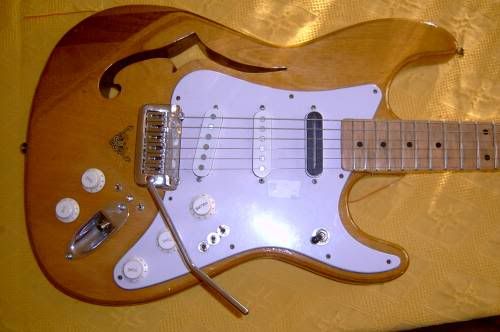 What it has is a gibson style 3-way to select bridge and neck pickups, master volume and tone and the mid tone control is now a master for the middle pickup (so it can be blended in to any position). There are three phase switches (that replaced the strat selector). Depending on these settings, the effect of combined pickups change radically from thickening to thinning the tone. This is particularly useful with the mid fade in control (making it a unique kind of tone control). The mid pickup bypasses the master tone so can add spice to a rolled down pickup setting too. This was always a versitle set up. The three way works well situated out of the way and makes the thing easy to use (requires a little routing however). And the phase switches are simply set like pre-programming what the mid position (combined) sound will be like, and the effect of fading in the mid pickup. 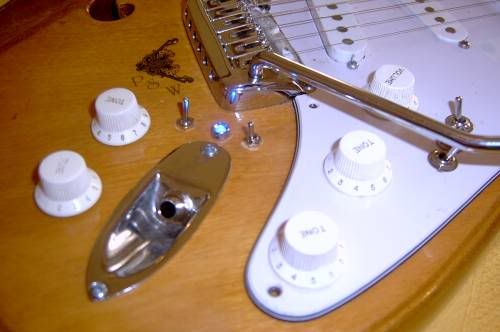 The above picture shows the controls for the sustainer. There is an on/off switch, a blue LED and a harmonic switch. This last creates controlled feedback infinite sustain of notes a harmonic an octave or more above a played note. There is a knob for sensitivity (but i'd delete that in future). I added another knob for a future piezo. I tested it and found that a little preamped piezo as found in cheap buzzers works quite well either mounted in the neck socket or on the trem block. Unfortunately, although tested it has not been implemented.  The above is a picture of the unique sustainer/pickup of mine. It's basically a cheapo single coil with a new steel blade pole piece and a small driver coil (the thin blue part) wound on top of it. With the sustainer off it works exactly as before (a passive single coil). When the sustainer is on, the driver part drives the strings and only the bridge pickup is selected. The circuitry is a simple amplifier...here's one someone else made 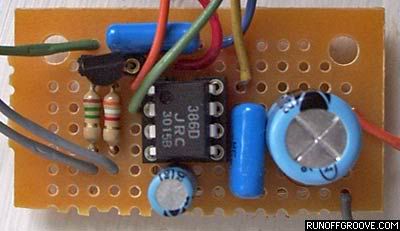 as you can see it's pretty small and simple. The tricky part, especially on a strat is all the bypass wiring and stuff, and finding room for the battery. Anyway...that gives you a bit of an idea of the type of stuff I've been into and hope this has been of interest and I can contribute a little more in the future.... Oh yeah...no sounds showing off the phase-a-roo switching but here are a couple of mp3's of this guitar in sustain mode... users.pandora.be/onelastgoodbye/sounds/beckistan.mp3users.pandora.be/onelastgoodbye/sounds/sirensea.mp3Enjoy...4real aka psw |
|
|
|
Post by JohnH on Jan 6, 2006 15:08:34 GMT -5
Hi 4real - welcome to this forum which is a great place on the net. I have enjoyed your psw posts on the. projectguitar forum and I know you will be a great asset here. Also, it is nice to get someone else here on this side of the planet. I have always been curious about your sustainer and your post above is very interesting, thanks for putting up the clips and photos.
JohnH aka JohnH
|
|
|
|
Post by UnklMickey on Jan 6, 2006 20:55:11 GMT -5
John, that's funny on so many levels! ...at 75 pages long, 1000+ contributions and over 32,500 visits there may well be peolpe here familiar with it or interested. Basically it is a thread to explore DIY sustainers and related ideas and is still very active...so feel free to join in but I'd just tag along, don't try and read the whole thing or anything  ... 4real, around these parts, the tone monster wiring diagram, at 8 pages is considered lengthy. 75 pages? Yikes! the whole business of sustainers is fairly interesting to me. i'm curious about a few things: what kind of voltage(s) and size are required for the batteries, and how long do they last. i would have thought the driver coil would weaken the magnet of the pickup it is mounted on. have you noticed any degradation of your neck pickup? is it even necessary to have a permanent magnet in the driver coil? it makes sense that the sensing coil would need to be as far as possible from the driver. has anyone experimented with putting the driver coil at the bridge and using the neck pickup as the sensing coil? has anyone tried sending the signal from the middle pickup to the amp, while using the bridge pickup as the sensing coil and the driver at the neck? thanks, and +1 for kicking off your membership with us on such a high note. (pun intended) unk |
|
|
|
Post by 4real on Jan 6, 2006 21:38:04 GMT -5
Hi...and thanks...very nice forum by the way and Gnuts main site was always useful to me with my mods... Ah...sustainers...you ask... what kind of voltage(s) and size are required for the batteries, and how long do they last.Ok...just a standard 9 volt. Uses them about as fast as a standard but greedy stomp box i guess...bit of a drain actually but I use rechargable 9volts which work ok. i would have thought the driver coil would weaken the magnet of the pickup it is mounted on. have you noticed any degradation of your neck pickup?No...probably cause it's got a ceramic magnet. Alnico is more suseptable to demagnetism...but I don't really think this will be much of a problem. As it happened I think the mods to the pickup actually improved it (a little more body perhaps). The individual poles were replaced by a steel blade. is it even necessary to have a permanent magnet in the driver coil?Yes...it's a lot easier to attenuate an existing magnetic field than to create one and then change it. Basically, the magnet slightly grips the string which is attrached and let go by the signal in the string. it makes sense that the sensing coil would need to be as far as possible from the driver.Yes...otherwise you get squeel from the driver feeding directly into the pickup driving it. However, I did try and limit this and make a bridge mounted system. has anyone experimented with putting the driver coil at the bridge and using the neck pickup as the sensing coil?I have...it's possible but...the harmonics in the vibration are smaller and more complex towards each end of the string and the available movement is less (it's fixed right on the bridge and nut right). So it's harder to drive and the harmonics will be less consistant (not so often an octave above) and possibly less musical. One person has made a mid pickup driver on a strat and got different sounds by just changing pickups. It's a more complex driver and circuit. He used two drivers like a reverse humbucker to limit EMI. You can also use sheilding to limit this too to get a bit closer to the source pickup. But it's tricky. has anyone tried sending the signal from the middle pickup to the amp, while using the bridge pickup as the sensing coil and the driver at the neck?Probably not cause it wouldn't work. The driver is really more like a speaker coil. 8ohms and heavy wire to take the current. A pickup wont work...the impedance is all wrong and the wire would burn out and not generate enough power anyway. You could use the driver as a pickup if you used a preamp, which is how fernandes and Sustainiacs Plus system works. 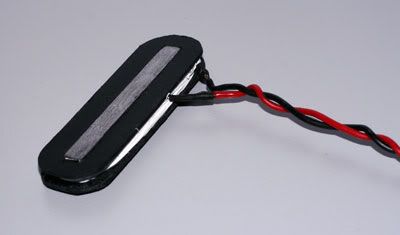 My pickup/driver is the only one I know of that is a traditional pickup and driver in one. Others are making just the driver part and adding that... 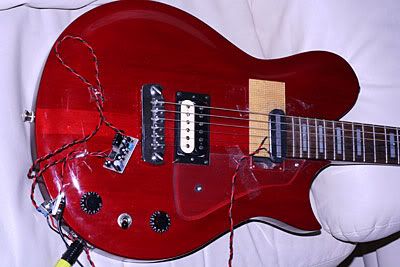 This is a favorite...the core is the magnet and was made with no bobbins and set in epoxy... 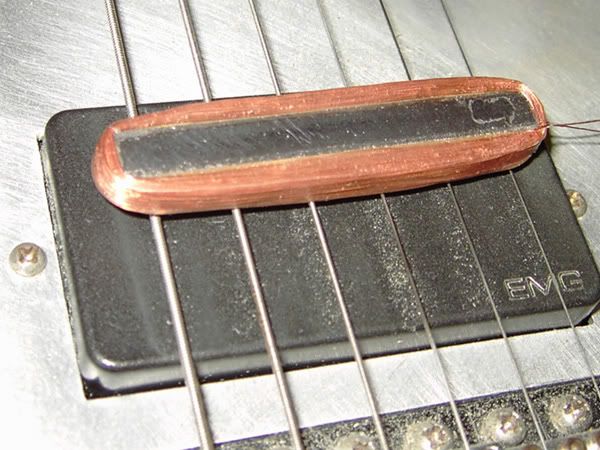 Here's a testing box of mine that i made that is external to the guitar.... 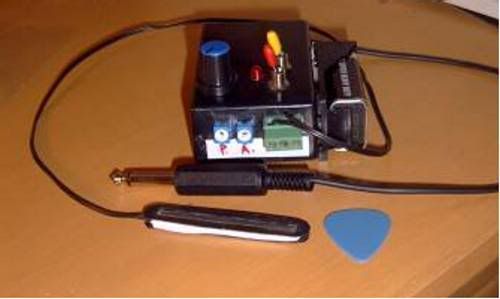 I just lowered the pickup and put that thin driver on the neck pickup... 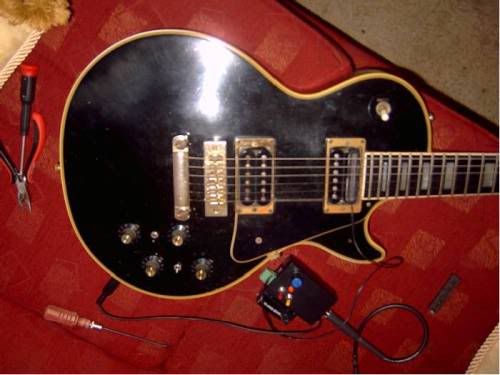 So you can see this can be made and tested completely external to the guitar. After playing around with it quite a bit. My current thinking is to have a single pickup guitar and driver in the neck, and just two switches for on/off and harmonic switch. I even think that I could build the entire thing as a humbucker now and just replace the neck pickup entirely and just look for room for the battery...would make the whole thing a lot easier... It's the installing it that is really tricky as you need to bypass the pickups and on mine I had to bypass both the hot and ground of all unused pickups...make for a complicated wiring job and a 4pdt switch on my strat for instance. Thanks for the interest...4real |
|
|
|
Post by UnklMickey on Jan 6, 2006 21:57:16 GMT -5
4real,
thanks a ton for all those in-depth answers.
i guess i phrased my last question poorly so, your answer wasn't to the question i TRIED to ask.
what i meant there was:
in your standard configuration, you sense the string with the bridge pickup. this signal is sent to an "internal loop" of the driver amp and driver coil. the signal from the bridge pickup is also sent to the "output".
have you ever considered trying sending the signal from the middle pickup to the output, while maintaining the same configuration for the "internal loop".
that would give you a different tone going to the main amp, and wouldn't cause any more feedback since the internal loop still has the gap between the neck position and the bridge pickup. any bleed-through from the driver to the bridge pickup would affect the tone, but that might be interesting too.
unk
EDIT:
BTW:
i believe you may be correct about a pickup not working properly as a driver, but for a different reason. i don't think a pickup would "burn-out". the impedance is too high to allow enough current to flow and cause that. since you have lots of turns you could generate the same magnetic flux with much less current, but you would need more than 9 volts to get that current with such a high impedance.
|
|
|
|
Post by 4real on Jan 6, 2006 22:50:34 GMT -5
have you ever considered trying sending the signal from the middle pickup to the output, while maintaining the same configuration for the "internal loop".
that would give you a different tone going to the main amp, and wouldn't cause any more feedback since the internal loop still has the gap between the neck position and the bridge pickup. any bleed-through from the driver to the bridge pickup would affect the tone, but that might be interesting too. Ok...I see what you mean...but the same principle applies. What most people do is make the device and hold the driver over the strings like an ebow to test it, selecting only the bridge pickup. Now you could select the mid pickup and it will still squeel. Basically, the pickup and the coil are linked by the magnetic fields like a transformer and you get this runnaway feedback loop (like sticking a mike into a speaker). I understand why you'd ask the question though...you'd think...  Well, all I can say it's questions like these that have made the Sustainer thread 75 pages long  Not only that, but I found that I had to disconnect both ends (the hot and ground) of both the neck and middle pickups to avoid noise in one or other of the harmonic modes. Go figure.  But...a better driver with a magnetically shielded (or rather focused) driver and or pickups would address the problem. One guy stuck a big piece of steel next to the bridge pickup to control it!!! Another when with sustainiacs "bi-lateral" format... 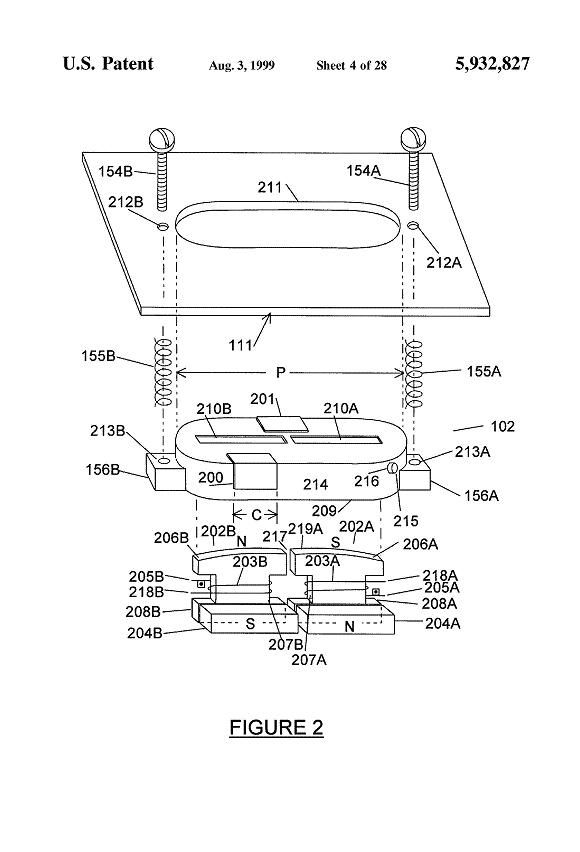 The idea is that the two opposing coils and magnets (like a humbucker) reduces the amount of EMI by cancelling out eachother. Not completely, but the guy who did this was able to mount it in the mid position and use the neck and bridge pickups with great success. The driver could be driven by either the neck of bridge too...neat. I spent a considerable amount of the early part of the thread pursuing the idea of Hex drivers. This takes this a step further to individual drivers for each string... 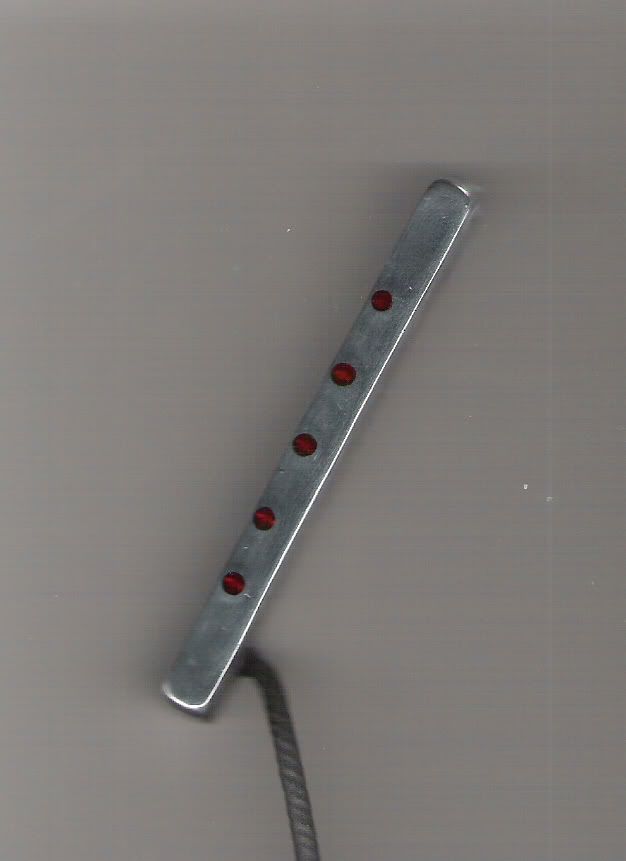 The above (about twice actual size) really captured peoples imagination. This driver is about 4mm thick/wide and contains 6 drivers, 12 rare earth magnets and LED's that light up when on. The whole thing was shielded in a iron powder/epoxy cast in an aluminium shell...hmmm, was getting out of the realm of DIY there, wasn't I  The aim was to make something that could be surface mounted with all pickup combinations, better polyphonic sustain and no permanent mods to the guitar. We even had a little friendly competition for a box that would mount on the guitar as a faux tailpiece... 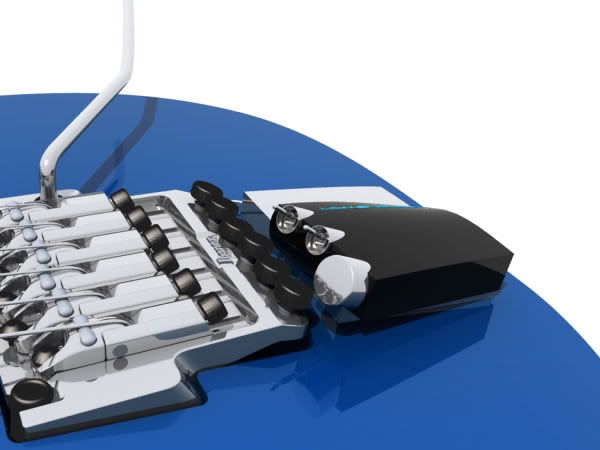 With posts like this, it's no wonder that that thread is so long... Alas...circumstances have resulted in me not continuing this work myself...but also, perhaps the hex pickup thing was a blind alley...you had to be careful about alignment and it didn't meet all the requirements at all...still, you got to like the box and the idea...and we did get close (i got the thing working within 2cm of a pickup!!). Tim who designed that one I believe has made a mold (he's a industrial design student and very talented...also made that bobbinless coil in the previous post) and he may just make it, you never know! err...so did i answer the question yet? It's one of the fascinating things about the idea...so simple, yet...I recently posted a Patent from 1892 (valve powered piano sustainer!) so...it could take a while yet!!! [glow=red,2,300]4real[/glow] |
|
|
|
Post by UnklMickey on Jan 6, 2006 23:11:21 GMT -5
yikes! looks like i muddied things up again by mis-speaking: ...that would give you a different tone going to the main amp, and wouldn't cause any more feedback since the internal loop still has the gap between the neck position and the bridge pickup. any bleed-through from the driver to the bridge pickup would affect the tone, but that might be interesting too..... what i meant to say was: ...that would give you a different tone going to the main amp, and wouldn't cause any more feedback since the internal loop still has the gap between the neck position and the bridge pickup. any bleed-through from the driver to the MIDDLE pickup would affect the tone, but that might be interesting too.... if the middle pickup was NOT in the loop feeding the DRIVER, and only used for the main amp output, there wouldn't be a mechanism for the signal sensed by the middle to cause any feedback (squeal). the EMF from the driver getting into the middle pickup would color the tone of the signal at the middle pickup, but since that would only be sent to the "main" out, and not sent to the driver, it shouldn't squeal. at least that's my story theory, and i'm sticking to it. unk EDIT: ...The above (about twice actual size) really captured peoples imagination. This driver is about 4mm thick/wide and contains 6 drivers, 12 rare earth magnets and LED's that light up when on. The whole thing was shielded in a iron powder/epoxy cast in an aluminium shell...hmmm, was getting out of the realm of DIY there, wasn't I  The aim was to make something that could be surface mounted with all pickup combinations, better polyphonic sustain and no permanent mods to the guitar. We even had a little friendly competition for a box that would mount on the guitar as a faux tailpiece... kinda reminds me of a variation on the gk synth pickups. i have an interest in hex pickups, but not for synth drivers or sustainers. something much simpler, yet just as wonderous in it's own way. |
|
|
|
Post by 4real on Jan 6, 2006 23:40:40 GMT -5
a-ha...a theory...try it and see ;D Actually, I know what you mean, but it's a little difficult to explain. I think i invented a term, inductive feedback. What the mid pickup "hears" is the sound of the driver. Consider this. The pickup is designed to be a very sensitive device for detecting the disturbances in its magnetic field (by the metal string vibrating in it). The driver is puting out a powerful electromagnetic signal that, close to a pickup, couples with the magnetic fields of close pickups (and travels through the metal strings also). What the pickup "hears" momentarily after generating the initial signal is the "sound" of the driver, not the string per se. Initially that is both the sound of the driver and the string and a powerful distorted and extremely loud sustain/signal is produced (that got me very excited at the time). However...when you stop playing...SQUEEL. Resonant frequencies of the coils, stray magnetic fields, circuit noise, etc take over. And when I say loud I mean a couple of volts coming out of the guitar and the distortion is not really that attractive. I tried noise gates and such. I also tried to trim the amplification hoping the thing was somehow super efficient, but then there was not enough power to drive the string. In fact, as I recall, it didn't even drive the string too well! Shame...you'd think it would work somehow...but...hey, I tried.  The effect is easy to test out if you make it external to the guitar, as is running the thing from the neck pickup and running it near the bridge. So...did I answer the question yet? The pickup (middle) will sense the driver as a massive disturbance to the pickups magnetic field and send it directly to the amplifier. When the string is not vibrating it will sense background noise and squeel, often at the frequency of the resonant frequencies of the coil(s) (err...i think/recall) which will overwhelm everything...very loudly!! (at least that's my story  ) |
|
|
|
Post by UnklMickey on Jan 6, 2006 23:54:42 GMT -5
well since you actually worked with this, i'm going to defer to you. (i'd be a knuckle-head not to.)
IF you answer the following in the affirmative.
in your tests, did you at anytime isolate the signal from the middle pickup to JUST the guitar amp. while using JUST the bridge pickup to feed the internal amp for the driver?
if you answer negative, then my theory is not yet disproven.
if you answer affirmative then i'll need to spend some time to figure out why.
thanks,
unk
|
|
|
|
Post by 4real on Jan 6, 2006 23:57:50 GMT -5
ohh...this could turn into on "big butt thread" as the PG sustainer thread was called recently!! 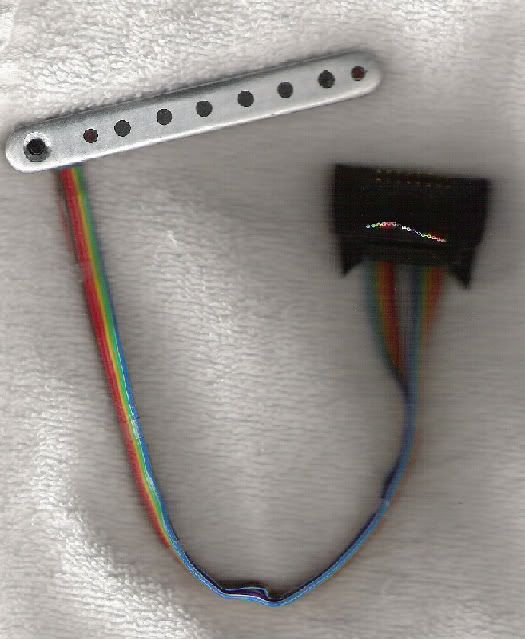 To be a true hex thing you have to have individual outs and for true polyphonic full feedback (all notes feeding back equally at once) you also need a hex pickup. I did get this driver to work as a pickup with preamplification by the way. The one above had two LED's and a momentary switch to turn it on for an occasional squeel, squark, or sustained note. OMG were they tricky to make and had to be aligned (so bending strings would be a problem then wouldn't it...doh!) but is fascinating technology...no coils to wind and a balanced (neutral) magnetic field that drove/sensed the side to side movement of the string...very unique and still slightly secret  This one didn't even have individual outs but you are looking at, at least, 12 outputs, 6 preamps and 6 amps and a fair bit of power...plus, you should drive it from a Hex pickup source. WOuld be an amazing sound though!! The best approach would be to use a piezo pickup like the Ghost saddles, Parker, or something like the Variaxe that has no magnetic pickups at all. Then the driver could sit right next to the bridge, just like the synth drivers. Oh, and...yes it would work on acoustic guitars (and basses too) in case anyone was going to ask. If tone variation is paramount...you could make a full set of pickup/drivers like mine and switch them also with the selection of the pickups...if you get that... |
|
|
|
Post by Mini-Strat_Maine on Jan 7, 2006 1:17:54 GMT -5
I even think that I could build the entire thing as a humbucker now and just replace the neck pickup entirely and just look for room for the battery...would make the whole thing a lot easier... Instead of trying to find room for the battery, how about something like this? guitarelectronics.zoovy.com/product/PMTXBAT9BTW, I may not understand half (okay, most) of what you guys are discussing, but it fascinates me anyway. Some pretty neat work on the construction of the various components in the pics, too. Most impressive.  |
|
|
|
Post by 4real on Jan 7, 2006 2:01:46 GMT -5
Nice find...Mini-strat...thanks for the compliments...
Still uses a battery though. There was some discussion about this over at PG again recently. Someone suggested a way of doing this but it was considered that for something like the sustainer that draws a bit of current, there would be some difficulty keeping the power supply noise out of the signal as the ground shares the earth.
Still debatable though. If someone had one of these, I guess it would be easy enough to test with a regulated wall wart attached to the battery clip.
Another scheme that I liked the idea of was a stomp box type of thing that sent the drive signal up the lead to the driver and switched on the floor. This too would have a fair bit of current and you'd have trouble with the switching off of pickups and such unless it was a single pickup guitar (that didn't need bypassing).
Then you know someones going to want to play wireless dont you!
|
|
|
|
Post by 4real on Jan 7, 2006 4:16:02 GMT -5
Oops...must have been a cros-post there...i missed this one... well since you actually worked with this, i'm going to defer to you. (i'd be a knuckle-head not to.) IF you answer the following in the affirmative. in your tests, did you at anytime isolate the signal from the middle pickup to JUST the guitar amp. while using JUST the bridge pickup to feed the internal amp for the driver? if you answer negative, then my theory is not yet disproven. if you answer affirmative then i'll need to spend some time to figure out why. thanks, unk I'm pretty sure the answer is YES... but don't let that stop you. I say pretty sure cause I spent 100hours futzing around with this thing. The original was done on a standard strat copy with a direct link to the sustainer circuit (before the controls) from the bridge pickup (also the neck at one stage for the bridge driver experiments) and had standard switching so the mid only was available and I'm sure I tried all variations. Unfortunately I can not replicate those experiments now with this guitar but I'm certain(-ish) this was done... oh...when doing the full installation on this one I found that i needed to completely isolate the coils (both hot and earth) of unused coils...so there may be more work that could be done on this if you've a mind to. I just thought, with my earlier experiments it is likely that the ground was still common across the systems. This only mattered in one or other of the harmonic modes, but still it might have a bearing on it. The evidence of the pickup "hearing" the driver though is overwhelming. The signal will transfer between the coils just as in a transformer... Micheal Brooks by the way (perhaps the father of the modern sustainer), is rumoured to use a standard pickup (though it's secret so...) and a transformer and over 100 volts...so you may be right...but a little unweildy. The "thin driver" idea came about from me trying to miniturize the thing during the Hex phase and gaining efficiencies that way. It's also good to surface mount between the neck and the neck pickup on a strat say as a secondary device. If I can rebuild my life (another story) I may return to this project and have an idea for a new driver system that has better EMI specs and may be a bit more efficient...likewise a circuit (but for that I'll need help...hint) that I have ideas for (the LM386 is a little old hat). In the mean time, there are quite a few people working on making variations on the theme with great success, so I'm defering to them for the meantime...  |
|
|
|
Post by eljib on Jan 7, 2006 6:17:18 GMT -5
Wow, just when I thought I was happy with my strat...
Welcome, 4real. You guys run a great site over at projectguitar. In fact, I had been very interested in the sustainer, but I'm not a great reader, so 75 pages was out of the question. Needless to say, I'm glad you are part of the forum, and I look foward to trying this thing out for myself now.
|
|
|
|
Post by CheshireCat on Jan 19, 2006 14:07:52 GMT -5
Hi there...I've just joined as a new member...Thought i'd introduce myself and my unique guitar... Normally I can be found "hosting" (for want of a better word) a very long running thread on DIY sustainer's over at Project Guitar under the name psw projectguitar.ibforums.com/index.php?showtopic=7512&pid=245855&st=1110&#entry245855at 75 pages long, 1000+ contributions and over 32,500 visits there may well be peolpe here familiar with it or interested. Basically it is a thread to explore DIY sustainers and related ideas and is still very active...so feel free to join in but I'd just tag along, don't try and read the whole thing or anything  So...here's a pick of the guitar...  What it has is a gibson style 3-way to select bridge and neck pickups, master volume and tone and the mid tone control is now a master for the middle pickup (so it can be blended in to any position). There are three phase switches (that replaced the strat selector). Depending on these settings, the effect of combined pickups change radically from thickening to thinning the tone. This is particularly useful with the mid fade in control (making it a unique kind of tone control). The mid pickup bypasses the master tone so can add spice to a rolled down pickup setting too. This was always a versitle set up. The three way works well situated out of the way and makes the thing easy to use (requires a little routing however). And the phase switches are simply set like pre-programming what the mid position (combined) sound will be like, and the effect of fading in the mid pickup.  The above picture shows the controls for the sustainer. There is an on/off switch, a blue LED and a harmonic switch. This last creates controlled feedback infinite sustain of notes a harmonic an octave or more above a played note. There is a knob for sensitivity (but i'd delete that in future). I added another knob for a future piezo. I tested it and found that a little preamped piezo as found in cheap buzzers works quite well either mounted in the neck socket or on the trem block. Unfortunately, although tested it has not been implemented.  The above is a picture of the unique sustainer/pickup of mine. It's basically a cheapo single coil with a new steel blade pole piece and a small driver coil (the thin blue part) wound on top of it. With the sustainer off it works exactly as before (a passive single coil). When the sustainer is on, the driver part drives the strings and only the bridge pickup is selected. The circuitry is a simple amplifier...here's one someone else made  as you can see it's pretty small and simple. The tricky part, especially on a strat is all the bypass wiring and stuff, and finding room for the battery. Anyway...that gives you a bit of an idea of the type of stuff I've been into and hope this has been of interest and I can contribute a little more in the future.... Oh yeah...no sounds showing off the phase-a-roo switching but here are a couple of mp3's of this guitar in sustain mode... users.pandora.be/onelastgoodbye/sounds/beckistan.mp3users.pandora.be/onelastgoodbye/sounds/sirensea.mp3Enjoy...4real aka psw That's brilliant work on the sustainer! I was going to get a Sustainiac, and have everything spec'd out and routed, but I'm tempted to try this one first, if nothing else for the education, but if I can build this, and if it is just as effective as the Sustainiac, then I might go with this. Tell me, how does this compare to a Sustainiac, and are their instructions to build this particular sustainer? Also, is this your sustainer? I think you indicated it was, but wasn't sure if you were just linking some info from that thread you mentioned. Chesh |
|
|
|
Post by 4real on Jan 21, 2006 0:13:02 GMT -5
Yes...that's my sustainer guitar prototype... If you've already managed the routing and can afford the Sustainaic I'd go with them. I haven't personally been able to compare mine with either the Sustainiac (which have good US service I believe) or the Fernandes systems but they all work in a similar way. The wiring can be a b%%%h with any of these systems and my strat was a case in point. I still get a "pop" when I turn the thing off which I imagine these guys have fixed although it plagued all the early systems. They use a preamp to convert the driver to a pickup which is different from my pickup/driver which is passive. The whole project became very conveluted as it progressed and at various times had different aims. One was to avoid the heavy modifications necessary with these kinds of devices. The Hex driver ideas were an effort to make the thing really small and have a better polyphonic response. At present it is the lowest string that typically sustains in a chord, for instance with all devices. This one of mine is very simple and small. The driver on many guitars could be made small enough to sit beside the existing pickups possibly and we were looking at trying to make a system that would fit on like a faux tailpeice at one stage. It certainly does work though and is a lot of fun to play. It is also pretty simple to build but of course it is still being developed and you have to DIY so there are no guarantees. I am looking at taking it a bit further though. My vision is to make a driver/circuit in a pickup sized package to replace out the neck pickup completely. The idea would be to make it almost as simple as swapping in a new pickup and finding room for the battery. There are even plans afoot to power it via a stereo lead...but I'll leave that to the experts. Anyway...it would be an education and a pretty easy project really. There are a number of threads associated with it...this one of course  ... The main thread projectguitar.ibforums.com/index.php?showtopic=7512&pid=245855&st=1110&#entry245855the tutorial thread projectguitar.ibforums.com/index.php?showtopic=16984the sounds thread projectguitar.ibforums.com/index.php?showtopic=17852and one at Arons DIY stompbox forum www.elixant.com/~stompbox/smfforum/index.php?PHPSESSID=0e36dbd11674cf10081426c7867849c5&topic=35062.0As far as I know it's the only DIY magnetic sustainer info around...certainly the longest running...pete |
|
|
|
Post by Runewalker on Jan 21, 2006 0:15:45 GMT -5
Alright!
1 page down, 74 to go.
I want one of these.
RW
|
|
|
|
Post by CheshireCat on Jan 21, 2006 3:31:12 GMT -5
Yes...that's my sustainer guitar prototype... If you've already managed the routing and can afford the Sustainaic I'd go with them. I haven't personally been able to compare mine with either the Sustainiac (which have good US service I believe) or the Fernandes systems but they all work in a similar way. The wiring can be a b%%%h with any of these systems and my strat was a case in point. I still get a "pop" when I turn the thing off which I imagine these guys have fixed although it plagued all the early systems. They use a preamp to convert the driver to a pickup which is different from my pickup/driver which is passive. The whole project became very conveluted as it progressed and at various times had different aims. One was to avoid the heavy modifications necessary with these kinds of devices. The Hex driver ideas were an effort to make the thing really small and have a better polyphonic response. At present it is the lowest string that typically sustains in a chord, for instance with all devices. This one of mine is very simple and small. The driver on many guitars could be made small enough to sit beside the existing pickups possibly and we were looking at trying to make a system that would fit on like a faux tailpeice at one stage. It certainly does work though and is a lot of fun to play. It is also pretty simple to build but of course it is still being developed and you have to DIY so there are no guarantees. I am looking at taking it a bit further though. My vision is to make a driver/circuit in a pickup sized package to replace out the neck pickup completely. The idea would be to make it almost as simple as swapping in a new pickup and finding room for the battery. There are even plans afoot to power it via a stereo lead...but I'll leave that to the experts. Anyway...it would be an education and a pretty easy project really. There are a number of threads associated with it...this one of course  ... The main thread projectguitar.ibforums.com/index.php?showtopic=7512&pid=245855&st=1110&#entry245855the tutorial thread projectguitar.ibforums.com/index.php?showtopic=16984the sounds thread projectguitar.ibforums.com/index.php?showtopic=17852and one at Arons DIY stompbox forum www.elixant.com/~stompbox/smfforum/index.php?PHPSESSID=0e36dbd11674cf10081426c7867849c5&topic=35062.0As far as I know it's the only DIY magnetic sustainer info around...certainly the longest running...pete Interesting. Incidentally, I wasn't planning on the Stealth Plus, which also runs the driver as a pickup. I was going to stick with the Stealth, which is just the basic driver unit, that being coupled with a Duncan mini-humbucker (plus a concoction of my own design!). So, I have the neck pickup thing covered really well. That being the case, I'm looking at $200. How much do you think it would cost to put together the sustainer that's been outlined in the thread? Also, would you say that the fact that Alan probably has all the kinks worked out, would that go a long way to justify the cost, do you think? Chesh |
|
|
|
Post by 4real on Jan 21, 2006 7:12:56 GMT -5
OK...
First...unless you are are a glutton for punishment (some are) I wouldn't read the whole Sustainer Thread of 75 pages. Much of the current stuff I recycle to help answer questions so start at the end perhaps and work back. Also, alot was devoted to other stuff...particularly my Hex driver designs (which still remain secret as to how they work and are not DIY), but also discussed are things like DIY ebows, acoustic Sustainers (typically speakers in the guitar to shake the instrument) and some of Ansil's infamous sustainer Mod idea (a little dodgy) and some synth concepts as well...so if you must read it...go ahead but I did warn you.
The Tutorial Thread was done by someone with enthusisum but not necessary to my specs and resulted in some poor performance...though it is a clear indication of the steps required. I recently posted links back to parts of the thread that detail in pictures the making of the prototype driver that I am making so if you work back, you'll soon locate that stuff too...
Now...chesh...depending on your switching and other stuff you may have about, it could cost about $30 with enough wire to make a couple of drivers and improve the design. Since you have a pickup already you can make the driver sit beside it like sustainiac do. In fact, someone is currently converting a single coil into a driver so that it will look exactly like a normal pickup (but will only work as a driver). You could do the same but it is not a matter of just winding the pickup with wiring wire as is.
The "secret" of my concept is the "thin driver". Typically 3-4mm thick and wound with 0.22 mm choke wire to 8 ohms (about 200 turns) and heavily potted (I used PVA) to prevent vibration. The fetzer/ruby circuit seems to work ok...i personally use a different preamp with a little more gain but it really is a simple amplifier...
Present thinking is that the "sensitivity" control (sustainer amp gain) is not necessary and I always run mine flat out. So, recent circuits have done away with this pot and all it's wiring as well...easier, cheaper and smaller. The pop is as a result of a backlash from the driver. My pressent thoughts are to have the circuit always on (power switched by the jack) and operating it by disconnecting the driver (which is the biggest power drain). This makes it much easier to wire too, as both the on/off and harmonic switches are working the driver leads exclusively.
The real headache is in wiring up the total guitar. The more pickups, etc the worse it is. For mine I have a 4pdt switch that to disconnect both the hot and earth of the mid and neck pickups, select the bridge pickup (bypassing the guitar's selector switch) and turn on the power (also lighting a nifty blue LED). This may be simplified under the new scheme where the power remains on and with a one or two pickup guitar rather than the Strat's 3 as with my guitar. Humbucking pickups may also help performance too.
But wiring is a headache with all these systems and I think the Sustainiac circuit has 24 wires coming off it...so, mine may actually be easier. Each guitar is different.
Sustainiac can justify the cost...this is a specialist device with a bit of tooling. The use a more sophisticated circuit and have to pay patents etc. I took the concept (which I recently pointed out is over a hundred years old) and took it back to it's essentials. Basically it is a giant fixed ebow. The thing is really though in the design of the driver. Once people mess with the receipe of wire gauge, core width and materials and esoteric magnets...it's performance I cannot vouch for.
You are looking at having to get a suitable magnet (pickup ceramic or multiple mags), a steel core (mine is 3mm ordinary steel from the hardware shop), some stuff to make a bobbin out of (people have used old CD cases for instance)...then some basic circuit components and a heap of wire. Many people have found that they already have this kind of thing and the rest can be bought from any Radio Shack/Dick Smith type store (there's nothing weird component wise).
The other thing to bear in mind is that the whole thing can be made outside of the guitar. If you select the bridge pickup and take a signal from it to the circuit and hold the driver around the neck pickup over the strings, you will readily see if the thing works as it should before you commit yourself to doing a complete instalation.
The whole driver design came about because early on, after reading too many patents and stuff, I thought that the phase compensation circuitry was crucial to the design. It was remarked that I should ignore that and just work on the driver. Eventually this drove me towards the largely impractical Hex designs. After some contreversy where it was suggested that the whole thread was a hoax(!!!) I decided to build something easier for the DIY (which was the original idea anyway) for anyone to build (partly so all this work wouldn't be wasted). Ironically, it was by ultraminiturising the driver (with the Hex experiments) I found that the more compact driver was far more responsive and quicker (eliminating a lot of the phase problems) and that lead to the "thin driver" principle that is at the core of my work on this project at the moment.
Anyway...I've put up a typically long post so as you get an overview of my ideas and the Sustainer Thread in general. This will hopefully make you feel better about NOT reading the whole thread or anything. Most of it has very little to do with this current design. I would however encourage you to join up and ask questions there as I know there are a few people building, or about to build this project and you'll gain a lot of insight from their work and experiences I'm sure.
Currently, I am not able to do anymore work on it myself in a practical way, but I am talking to people and am interested in hearing from people who would like to develop it a little further. As I said, at this stage I'm looking at a circuit (improved and more powerful) and possibly a new driver design that should fit into a pickup sized hole, as a drop in replacement for the neck pickup. This device should have as little as 8 wires to connect (power, signal and switches) and be a neat and effective little device. I believe the whole thing would work out less than a standard pickup and certainly less than that of current sustainer systems without the high mods and routing of these systems.
Anyway, that is still a fair way off...for now it's DIY all the way I'm afraid.
It's fun to play and makes some unique sounds. In particular, the ability to feedback clean sounds is fantastic, the harmonic mode extends the range of the instrument and the ability to swell notes by just fretting them (no picking) is a pretty cool effect...The more the merrier so I hope we'll be seeing a few GuitarNut's sustainer to rival the PG ones on display....pete
|
|
|
|
Post by CheshireCat on Jan 21, 2006 15:13:11 GMT -5
The pop is as a result of a backlash from the driver. My pressent thoughts are to have the circuit always on (power switched by the jack) and operating it by disconnecting the driver (which is the biggest power drain). This makes it much easier to wire too, as both the on/off and harmonic switches are working the driver leads exclusively. Excellent. So, let me ask you a question. Do you think that the Sustainiac avoids the pop because it turns on to standby mode when you plug the guitar in, and then when you turn on the sustainer itself you don't hear the pop? Reason being is that I was going to use a Fender S-1 Switch (4PDT push/push pot) to simultaneously turn on the sustainiac and engage a dedicated battery. Basically, in using GraphTech's GHOST Modular Pickup System, I'm going to have a dedicated battery and specialty jack for that, and can't afford to run the Sustainer off of that. The good thing tho is that I have two seperate battery boxes and can run the slow burn off of one of them (EMG, GraphTech) and the fast burn off the other (Sustainiac, other goodies). Do you think that engaging the battery and turning on the unit simultaneously would cause that pop, or do you think perchance that Alan has already sorted that out and that wouldn't be an issue? I would email Alan, but I want some clarity before I send an email, so as not to waste his time with confusing, ambiguous, poorly-thought-out questions. Chesh |
|
|
|
Post by 4real on Jan 21, 2006 17:06:08 GMT -5
I believe so. On the Arons thread some experts discussed it and it would seem the most likely way...certainly the easiest. Another way may be to have some kind of slow drain to earth. Early sustainers all seemed to suffer from this problem (so I'm tole) and I think it is the nature of the beast. Sustainiac also are supposed to be using class D amplification which has less power draw too. The DIY version is very simple, yet still quite effective though. In view of their preamped plus version (which would require constant power) I'd guess that this is what they would be doing, Fernades too. Is the S1 a 4pdt? That's a pretty hefty switch! I'd be checking on that push pulls are typically 2pdt which would work for the harmonic mode switch. That's a lot of power in there!!! So, the plot thickens!! I'd love to get my hands on this guitar to do further experiments and such a guitar is just crying out for phantom powering such as Variax have as an option. You could still have dedicated battery for the sustainer circuit with my idea of leaving the thing running. It's the energy lost in actually driving the strings...the driver itself...which is the real culprut in draining power. With the driver switched out it shouldn't draw excessive power I wouldnt think and eliminates the "pop" possibility. You could have some more options up your sleave here too. The afterburner could be used as an effective preamp for the sustainer, the ghost piezo system may be able to run it...all kinds of things. The phantom power idea has not been tried but is interesting. It would perhaps not be practical with your instrument as you are likely to be running in stereo already with the acoustic out, no? Also, are the pickups active EMG's too...this would also improve things and of course active pickups are always powered up and are better at handling noise problems. I hope you can get to the batteries easily and can budget for them, cause you may find you go through a few!! It's probably not fair to compare an experimental DIY project with what Sustainiac has to offer. They have a professional and sophisticated design that's proven and US backup and installation services I believe. With this thing you are on your own. Especially problematic will be getting something that will match the professionalism of the rest of your systems...ghost and EMG systems don't come cheap...so if you have gone this far with the guitar perhaps you should consider going the whole hog and lash out on the Sustainiac System. Whatever you do, you will find the Sustainer highly adictive to play with...it really is a lot of fun and opens new doors. 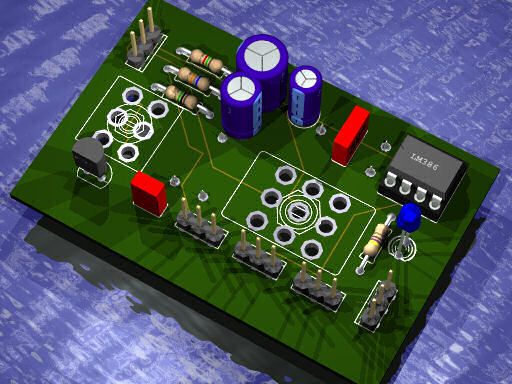 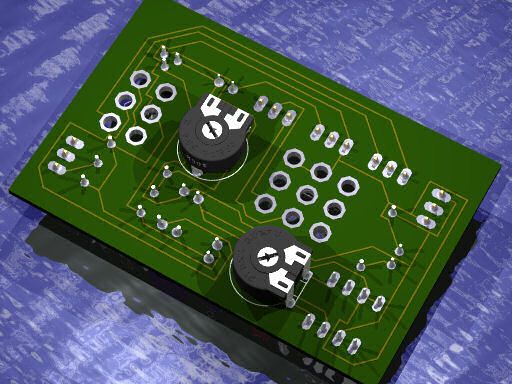 I noticed some new stuff appearing on the main thread BTW with a very professional looking circuit design (above) just posted....good luck...pete
|
|
|
|
Post by CheshireCat on Jan 22, 2006 3:47:33 GMT -5
Pete, First, great looking graphics! I'd love to find out how the artist did that. From scratch? A software package? Yeah, I was thinking about having the Sustainiac always on, standby-mode wise. Basically, I have two battery boxes, one for fast burn and one for slow burn. Guess which one would power up the Sustainiac.  As far as everything else, yes, the Fender S-1 switch is a 4PDT push- push pot, not a push- pull pot. Ergo, it has a pin that plunges up and down on a little miniature momentary on, momentary off switch, which then routes the poles on a round circuit chip the diameter of the pot (standard 250K or 500K pot). Ergo, it's got a lot of switching power and packs a wallop, all in a very small package. Quite ingenious, actually. Actually, I have two, count 'em two!!, Fender S-1 Switches. One for the Sustainiac stuff, and the other for a variant on the Mike Richardson mod. Tho, as it happens, I might be just doing the straight ahead DPDT if I don't need to do the simultaneous standby switching. We'll see. Are all the pickups active EMG's? Alas, no. I have a Duncan Lil' 59 in the neck position (soon to be coupled with the Sustainiac), a Ducan Antiquity Tele Neck pickup in the mid position, and an EMG-89 in the bridge position. Now, that said, something very interesting is in the works. Because I was making room for the Sustainiac (not getting the Stealth Plus), and ended up compressing the JB I originally had into mini-humbucker form (in the personage of the Lil' 59), I lost a lot of bassiness because the coil aperature moved further towards the bridge. Well, it occurred to me that if I had a coil above the Sustainiac that that would give me the bassiness back, and, in fact, make even bassier than before. So, in the process of looking for a suitable, and suitably small enough, pickup to do the job (I had even looked at a Taylor T5 pickup), I hit upon the idea of using a coil from a minihumbucker. Well, turns out, a friend at a guitar shop had a defunct Lil' 59 that he couldn't use or sell. He gave it to me with his blessing, suggesting I see what I can do with it. Well, I was able to salvage one of the coils, and am now building it into what might be the world's slimmest single coil!  (Probably not, but I like saying that.  ) Of course, the problem becomes that I will have a monster antennia for hum. Well, then it occurred to me. Why not just couple it with the other Lil' 59, and treat it like the top coil. So, the actual top coil of the full Lil' 59 becomes a dummy coil, and is replaced by the single coil above the Sustainiac. Also, instead of standard splitting, which would take away the humbucking fucntion, I'm half-phasing, so I get the effect of a split, but still have some humbucking function (tho possibly diminished . . . not sure yet . . . jury's still out on that one). So, that will be interesting. Also, fwiw, I'm also making a dedicated two pole pickup for an octave divider that will be embedded directly into the neck at the 20th fret scallop, right under the Low E and A strings. So, that pickup will be made completely from scratch as opposed to the aforementioned one basically being "rebuilt". Now, the dedicated two pole octave divider pickup will be preamped with a modified EMG-PA2, or, at least, that's the plan. Sound interesting so far?  Chesh |
|
|
|
Post by 4real on Jan 22, 2006 5:42:17 GMT -5
Hmmm...what can I say, that is one custom instrument and you could easily build this project if you can build that! I don't quite get the idea of a two pole octave divider pickup...what a concept.
You know...if you could get a slim bobbin like that you could make a driver out of that. You need to block up the lower half of the bobbin so the drive coil is up the top and get a magnet under it, but that would look pretty cool as a third coil with the slim humbucker...look like a mini triple coil...very nice. I recently described that as an option for someone wanting to convert a single coil into a dedicated driver that looks exactly like a pickup.
If you wanted to go right out on a limb...if you could make two driver coils the size of each of the mini-humbucker coils, and wind them to 4 ohms and wired reversed to eachother, you could mount the driver on top of the pickup like i did on my single coil. I had always wanted to do this as the two coils would act to cancel a lot of EMI and still drive the string (possibly better). The advantage of this is that you dont need a magnet (it will operate off the pickups magnet) and you can locate it wherever you like. Basically it adds 3mm in height to the pickup but the pickup senses through the driver...my pickup/driver combo had no change in tone from this conversion...much to my amazement. That is what I use on the strat here...the driver is also a pickup exactly the same as the mid one! There are details over at PG...as always...
Also...you know you could rip all the frets out with a sustainer too. Normally a guitar without frets goes...doink, doink...but with a sustainer you get that frettless bass trombone sound on all the strings...think of the microtones you could hit. Seriously, there is a whole forum on it somewhere, even Vai's got one on a triple neck Jem (but then he would) I saw on DVD.
You may need another S1...sustainer's need two switches, one to activate it and another to change modes to play those crazy harmonics. I love the S1 idea but i didn't realize that it had that many poles...that's great!!
So...sounds like an amazing custom machine...perhaps you do need a custom sustainer...it will be interesting to hear what it would sound like with your acoustic sound from the ghost saddles...because they are peizo you will have zero EMI interferance with these...
best of luck with that thing...[glow=green,2,300]pete[/glow]!!!
oh and on that graphic, this is what he commented...
|
|
|
|
Post by CheshireCat on Jan 22, 2006 6:36:33 GMT -5
Indeed, and thank you! Hmmm...what can I say, that is one custom instrument and you could easily build this project if you can build that! I would think so, but at the same time, hmmmmmmmmm . . . I'm doing so much R&D as it is . . . I wonder if I would expend $200 worth of time and effort (and money) trying to come up with something even half as good as what Alan has worked up. It would be fun to try, that's for sure. But, that said, I wonder where the point of diminishing returns would clamp down. Right now, I'm riding the crest of the wave of accelerating returns. Don't want to slow down that train. I don't quite get the idea of a two pole octave divider pickup...what a concept. Well, it's simple. An octave divider will halve any signal and make it, in musical terms, one octave lower. But I don't want this as some sort of fancy, onboard Octavia. Specifically, I want to create/emulate the effect of an 8 String Guitar, tuned, say, to EAEADGBE, or something to that effect, much the same way that a Sustainer would be like having a third arm doing some Jimmy Page style guitar bowing while your other two arms do all the usual fretting and articulating. So, that being the idea, I would have a two pole pickup taking the signal from the Low E and Low A, and sending it to the divider, which would then knock it down an octave. At the same time, I would have a phase inverting circuit flipping the undivided signal, which would then mostly cancel out the guitar signal from those strings. IOW, I would be erasing the guitar Low E and A, and replacing them with the newly synthesized bass Low E and A. Ergo, I could do walking basslines that would literally be basslines. I could thicken up chords. I could also have an un-phase-canceled version where the E and A are octave doubled, kinda like Wes Montgomery or something. Or like Jack White from the White Stripes. Now, while I'm doing that, I can also have an option where I take a signal from this new pickup I'm working on and have, in effect, a 6 string bass. Since I have it already, I might as well use what I can get my hands on. Now, if I wanted an Octavia effect, I won't use this. I'll just build the effect and make it part of my pedalboard. This is strictly for creating the effect of having the lower bass strings on the guitar. See, I can't otherwise use the signal from one of the regular pickups because that would octave-double everything (thru octave-division) and that would just be an effect. But if I can isolate it to just the lowest two or three strings, then I can make this functional in that regard, ergo, the dedicated pickup. You know...if you could get a slim bobbin like that you could make a driver out of that. You need to block up the lower half of the bobbin so the drive coil is up the top and get a magnet under it, but that would look pretty cool as a third coil with the slim humbucker...look like a mini triple coil...very nice. I recently described that as an option for someone wanting to convert a single coil into a dedicated driver that looks exactly like a pickup. Well, actually, I would probably order a holeless pickup cover (like an EMG) from allparts, and just epoxy the driver in the bottom (top), and what not, so that when it set, and I turned it right side up, the driver would be all the way at the top (now bottom). I'd also see if I could cut a slit or space for the bar magnet or what have you, just to make it look interesting. Still, the Sustainiac is looking all the more appealing. Also...you know you could rip all the frets out with a sustainer too. Normally a guitar without frets goes...doink, doink...but with a sustainer you get that frettless bass trombone sound on all the strings...think of the microtones you could hit. Seriously, there is a whole forum on it somewhere, even Vai's got one on a triple neck Jem (but then he would) I saw on DVD. That would be an interesting idea, and one I might explore on other experimental guitars, but not the Utah. The Utah was never meant to be an experimental guitar . . . I just wanted to have available all the tools I'd want to use. It was actually meant to be a very practical guitar, with everything I could need. Kinda like a Swiss Army Knife. Also, it's half-scalloped, and I'm looking at some really sweet stainless steel frets, so I think I might stick with the frets for a bit longer, tho I am getting all sorts of interesting ideas with the fretless thing. You may need another S1...sustainer's need two switches, one to activate it and another to change modes to play those crazy harmonics. Well, actually, with the Sustainiac, a basic DP3T (on-off-on or on-on-on, I think) is more than enough to get all three modes: fun, har, mixed. Tho, as it happens, I might not even need the first S-1 if I decide to opt for always on standby mode to avoid the possible popping sound (assuming that the Sustainiac would be susceptible to it). I love the S1 idea but i didn't realize that it had that many poles...that's great!! Indeed. Quite the revolutionary invention. Which is probably why Fender still hasn't let it loose yet. (Try finding one . . . they're around on eBay, but be ready to pony up.) So...sounds like an amazing custom machine...perhaps you do need a custom sustainer True, but, then again, I'm not above letting someone else do the work if they've paid a fortune in R&D as it is . . .  Actually, I think just getting all this stuff on here is enough of an accomplishment. You haven't even seen what it looks like! And I didn't even tell you everything. There's a lot more. ...it will be interesting to hear what it would sound like with your acoustic sound from the ghost saddles...because they are peizo you will have zero EMI interferance with these... Indeed. I'm looking forward to it! best of luck with that thing...[glow=green,2,300]pete[/glow]!!! Thank you! And thank you for all your help! oh and on that graphic, this is what he commented... P.S.: It's really cool what you can do with Eagle and POVray, isn't it?! Interesting! I get to look into that! Chesh |
|
|
|
Post by 4real on Jan 22, 2006 7:29:33 GMT -5
There's More?!?!!
You may well be right about the diminishing returns. I'm pretty sure Sustainiac have fixed the old "pop" thing and if you can fit it on there and get it, or the Fernandes system, at an affordable price...go for it. Really, compared to a pickup a commercial sustainer is not really that pricey. The DIY project originally tried to take the sustainer a step or two further. The big drawback with all sustainers is that although you can play chords cleanly and ring true, the lower notes always predominate and sustain while the other notes decay as usual. This is because the drivers and the signal is monophonic. I tried addressing this by making six miniture drivers, but to address the signal problem you'd have to use a hex system like the ghost with midi driving option...but even there, you'd need 6 amps to drive it and a whole bowl of complex and very tiny spegghetti wiring...not to mention the power consumption.
I did create a unique miniture hex driver and tried to use filters to drive the strings independantly...but the whole thing was really too adventurous and I through in my work for a more conventional system.
I see what your doing with the octave divider thing now. I used to use a Boss Octaver to simulate bass (before I got my fretless) and it's quite effective. You'll find the sustainer can doo some great things with this. Thicker strings sustain more easily and you can easily sustain notes on the low e and a by just fretting the note creating a bowed effect...no need to hammer it or anything, just fret it!! Very cool sustainer technique.
The fretless crowd use thick strings as they really dont need to bend strings and for that the sustainer is essential. At least one guy is using this DIY on his custom V fretless but otherwise the sustainer is essential...interesting sound.
You certainly are on the road less travelled with this instrument...happy trails...pete
|
|
|
|
Post by JohnH on Jan 22, 2006 15:06:04 GMT -5
Ive just caught up with this thread. I saw it dissappearing into the distance towards the horizon where threads get to be 75 pages long, and wanted to ride this train.
The great thing about discussing ideas that are way outside the box is that there can be side products that are unexpected. So although building a sustainer is not on my list (yet), I think it is well worth persuing the ideas.
Heres a simple question. I can see how the desire for better polyphonic performance lead to the work with the hex driver. As a difererent approach, has anyone tried feeding the driver signal through some tone EQ before the driver? Im thinking that something like a treble boost, rising steadily with frequency might spread the response further up the frequency range, by giving more drive to higher frequencies.
John
|
|
|
|
Post by 4real on Jan 22, 2006 18:56:12 GMT -5
Hi John This is the real reason the sustainer thread has been going on so long...it's really about ideas, the what ifs, the unexpected discoveries and failures and the thrill of the chase  This is absolutely true and a lot of ideas and shared knowledge has sprung from it. There are a few secrets I must admit too that have got me into a little hot water! The prime example is the development of my hex drivers. My first experiments on the thread involved a small cylindrical coil. To my delight the thing was so powerful as to shake the strings so as they crashed into the frets! But this would only drive one string. So eventually I set about trying to make the equivalent of six of these things...but the problem is, how do you make them small enough given there is only 1cm between each string? Well, the frustration of winding tiny coils around even smaller rare earth magnets and chaining them together only to find one had failed was overwhelming. Eventually, I made a conceptual leap that lead to a chain of others... Now the whole thing may have been folly in practical terms but, I can make drivers 5x5x10mm (see the photo in an above post)...and even found room for LED's in it! Not only that but I used no coil winding, dual balanced magnetic fields (12 especially aligned magnets) and iron impregnated epoxy for shielding and construction in a kind of exoskeleton mold. So...what else could this do. Well, it will work as easily as a hex pickup as a hex driver. One of the ideas was that the string vibrates in 3D space. A typical Nth/Sth coil tends to push and pull the string up and down. These critters tended to pull them from side to side as well by attenuating a balanced magnetic field. Now gibson has spent a lot of money it would seem on their eMagic idea to attempt a similar effect with speciallized ultra-miniture senses in the bridge. Other's like Variax use individual piezos for a similar hexophonic output. The fact is I know very little of practical electronics and have taught myself through this project mostly the theory of it and magnetics to do it. It is the naive enthusiast who is most likely to find the new direction. And that is the reason to promote the "ideas" because it is by people DIYing the thing that the ideas will evolve. And the pursuit of ideas is itself a worthwhile aim, is it not...art for arts sake as it were. A lot more came of it and continues to do by being engaged in this way. One fellow, Tim, made this fantastic driver (also pictured above on an EMG pickup) wherein the coil is wrapped around an internal magnet. He wraped it in cling wrap, stuck steel plates to the magnet, wound it in epoxy then removed the steel plates...instant, ultimate potted, bobbinless coil!! This technique could be used to create pickups or any device involving coils...all because someone with diverse interest (he's an industrial designer) got caught up in the "ideas" and actually put some thoughts into practice. Here's a few other ideas...using hall sensors to detect string vibrations, running the string through a coil and sending electromagnetic pulses along it, cutting the cone out of a small speaker and mounting it to the trem block and physically shaking the strings!!! My "thin driver" concept came directly from trying all these dead ends and salvaging something that just seems to work. It is not modeled after a conventional pickup really as the current crop of comercial units are, but from some quite different ideas brought back to a simple form. Well, that's been the way with inducing feedback at will with a whawha pedal isnt it. Unfortunately, my abilities in practical circuit design are near nil and such experiments were carried out using effect boxes such as Wha's and Flangers, compressors and fuzz boxes on the drive signal before amplification. At one point I was waxing lyrical about the hidden potential of such things to radically change the way a string would vibrate. So, the answer is that it has certainly been put forward but not fully explored either conceptually, or more importantly, practically except in my own ad hoc way. My intention was to drive the hex drivers from a mono source in this way, or to tailor the driver construction to each string. A large component of the lower strings superior response is the mass off the strings, it's simply easier to move a lower tensioned string, vibrating relatively slowly and with more magnetic material in them. The other is that in a polyphonic setting, the drive signal is a complex wave of which the fundumental is the lowest component...it's a hard one to get around...accentuating higher frequencies also accentuates the harmonics of this lower tone, driving those too...not necessarily the tones of the other strings sounding below it. I even came up with a concept of firing especially filtered signals to the hex drivers sequentially and very rapidly...kind of like the combustion engine...but alas I am not skilled enogh to actually make it!! Anyway...as you can see I'm an enthusiast. There is something really organic and powerful about feedback and actually manipulating the physical vibration of the strings. Unlike a signal processor, this "effect" actually changes the instrument and how it can be played and what can come forth. As an "idea" it is so tantilizingly simple yet the devil is in the details...the ideal interlectual exercise!! Along the way it has drawn in some amazing people with really interesting ways of thinking and approaching things...as I found here again with you guys. Contributors have included designers, kids who have gone on to embed pickups entirely into the wood of custom guitars, electronics gurus, transformer designers, physics students and just interesting naive people like myself who, as you say, dare to think outside the box! So...whether you are interested in building such a device or not (and many contributors are not) the pursuit of the "ideas" is what has kept the thing going and keeps people like me somewhat addicted...if not obsessed ....[glow=blue,2,300]pete[/glow]BTW...I often get email from people who want to bounce ideas about about all kinds of things and I welcome it...as long as people realise that my experience is limited and my ideas have often turned out to be wrong and that, DIY stands for "do it yourself"!!  |
|
|
|
Post by 4real on Jan 23, 2006 5:03:01 GMT -5
I just added a new little demo tune at soundclickThe YearningActually worth a listen, I'm starting to get the hang of this thing now. Basically, I changed the battery recently and it's so much better. I have been showing off some of the more extreme harmonic functions but it is actually more responsive in Fundumental mode. One of the tricks is to play much lighter than usual. On this track I'm starting to get the hang of imitating woodwind sounds and getting the chord sounds to sustain a little more. The breathy sound is partly cause with a light touch there is a little bit of swell in the notes, more voice like and the strings slightly hit the frets giving it a kind of breathy quality. Well worth a listen and only a little clip. Enjoy...[glow=red,2,300]pete[/glow] PS...there are a few other demo tracks there if you haven't heard them yet
|
|
|
|
Post by 4real on Sept 14, 2006 18:05:18 GMT -5
Hey there... Just drop in occaisionally these days, good to see the wiring gurus are still active at G'nuts... ;D Haven't been doing too much myself, but the Monster Sustainer thread is still going strong over at Project Guitar... As of writing we are coming close to 60,000 visits and have had 1595 posts on the main thread alone. The main thread is now on page 107 !!! projectguitar.ibforums.com/index.php?showtopic=7512&pid=288454&st=1590&#entry288454Recently added to the links already given is a pictorial of me building the pickup/driver combo used in my guitar in the first post...you can find that here... projectguitar.ibforums.com/index.php?showtopic=24211There has been a resergance of interest of late, a few successful builds and a lot of discussion about circuits (using voltage inverters to drive it?!), driver building tips and dual coil designs (to reduce EMI) and a guy who was inspired to use a standard rail pickup driven by a PA to make a sustainer...the proof is in the video (not the most practical device, but it works in a fashion)... Anyway...a little shameless promotion, but as there appears to be 1500 visits to this thread since it was posted, I thought I'd drop by and say g'day...and update this thread a little...maybe it will generate some google searches over to here and others will discover the G'nut's site...all the best... pete [glow=blue,2,300]4real[/glow] |
|
|
|
Post by ccoleman on Sept 19, 2006 15:42:41 GMT -5
Nice DIY Sustainer mega-thread ... Now I have one question for ya.... Did you ever think of taking the results of your extensive research & development of this sustainter.. and buy the parts in bulk and make up a kit version to sell ?? I for one would buy one for a fair price.. let's say 25% more than the raw cost of the parts.. you could make some good cash since your sound demos sound reeeeeaelly nice, man!
|
|















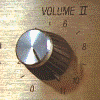





 Well, all I can say it's questions like these that have made the Sustainer thread 75 pages long
Well, all I can say it's questions like these that have made the Sustainer thread 75 pages long 










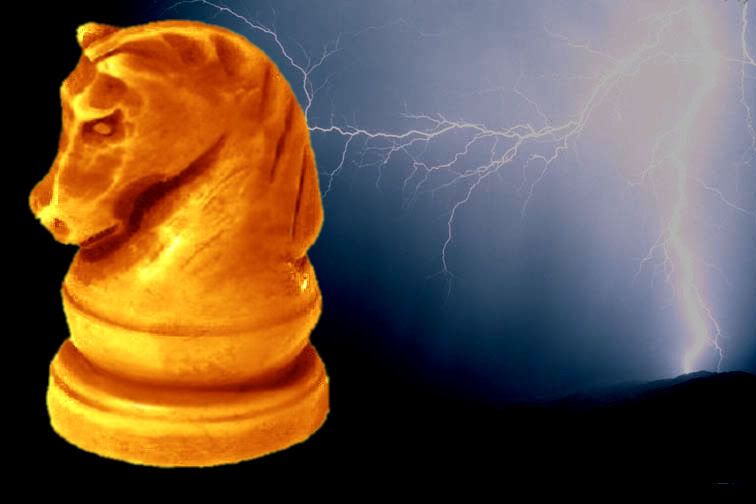


 (Probably not, but I like saying that.
(Probably not, but I like saying that.